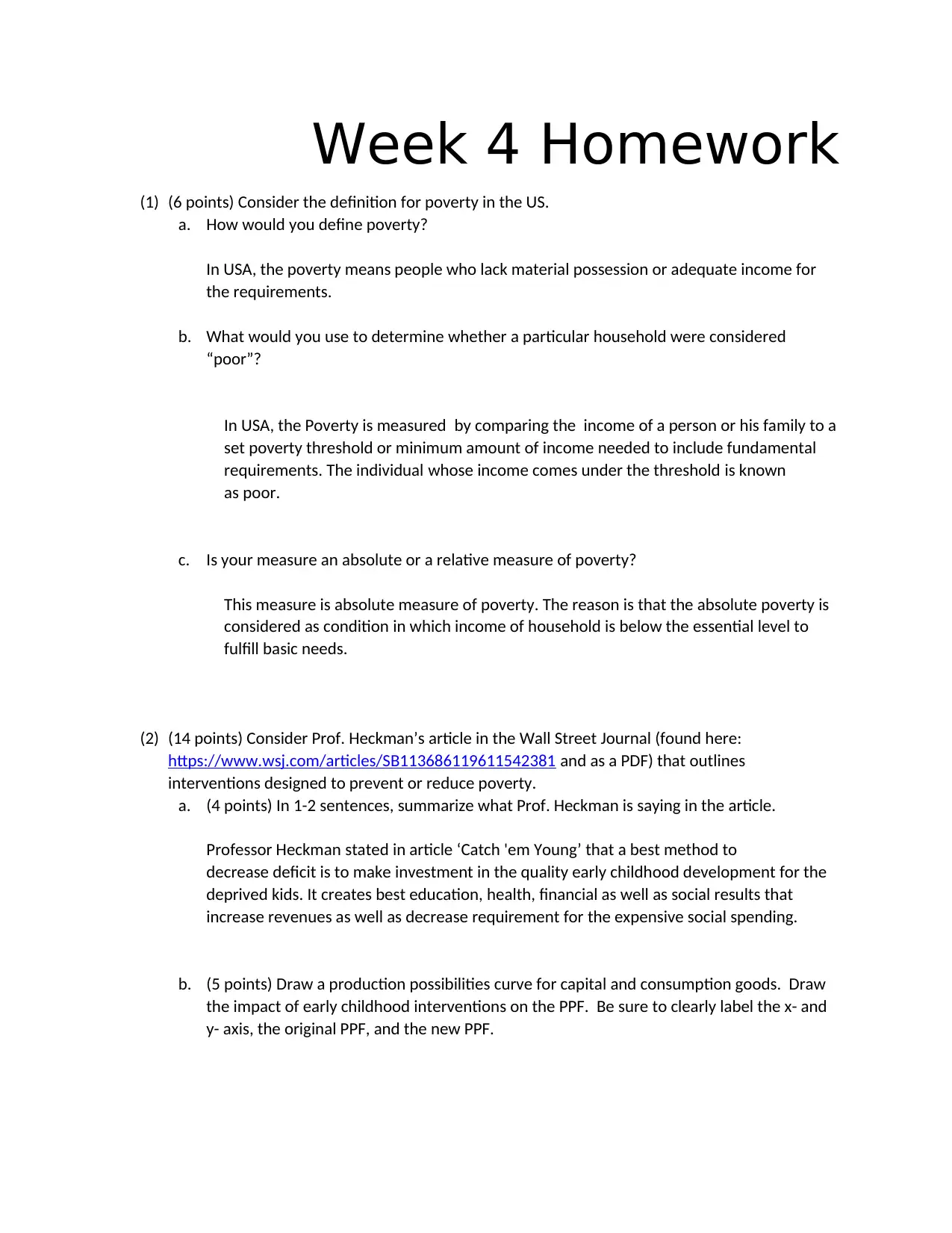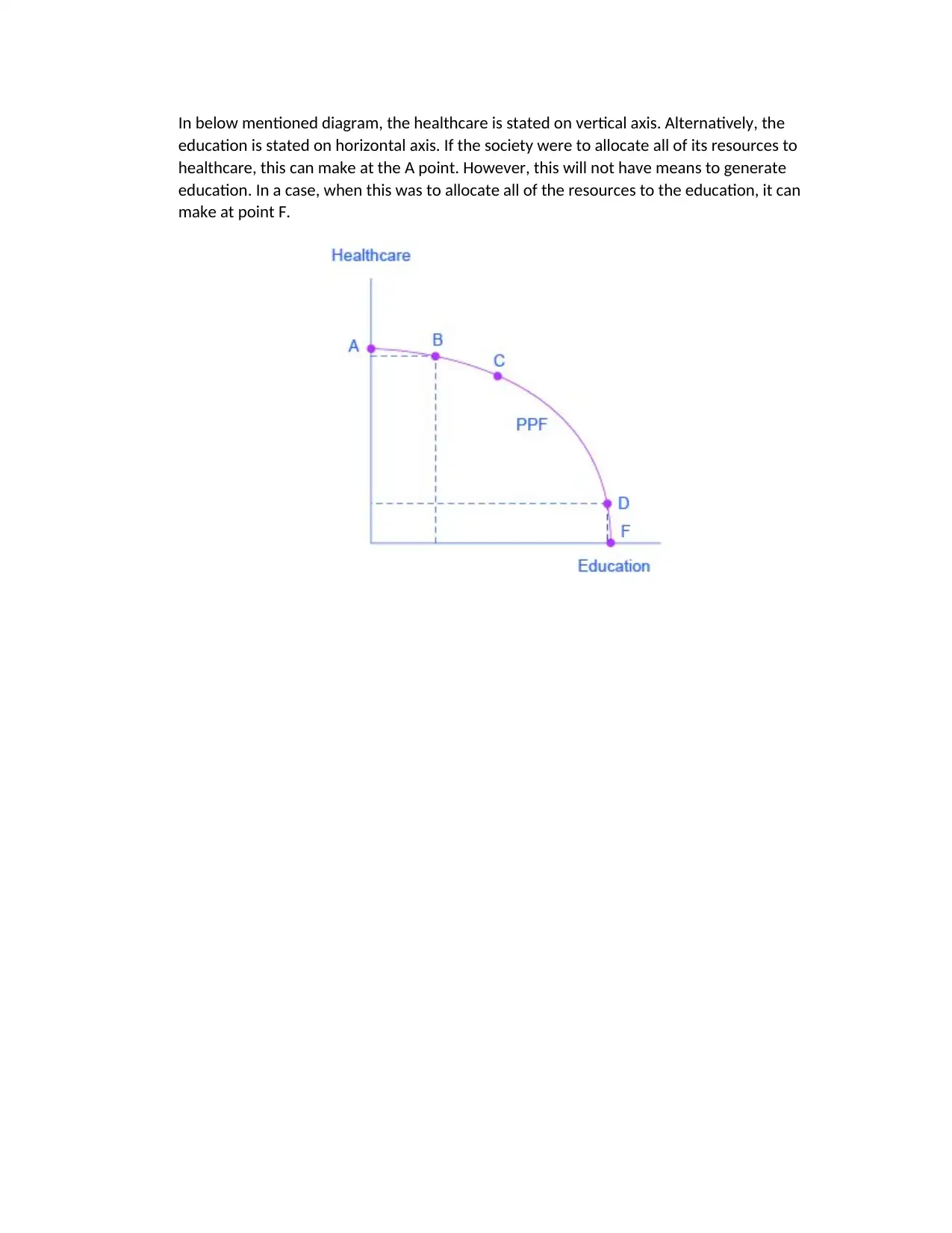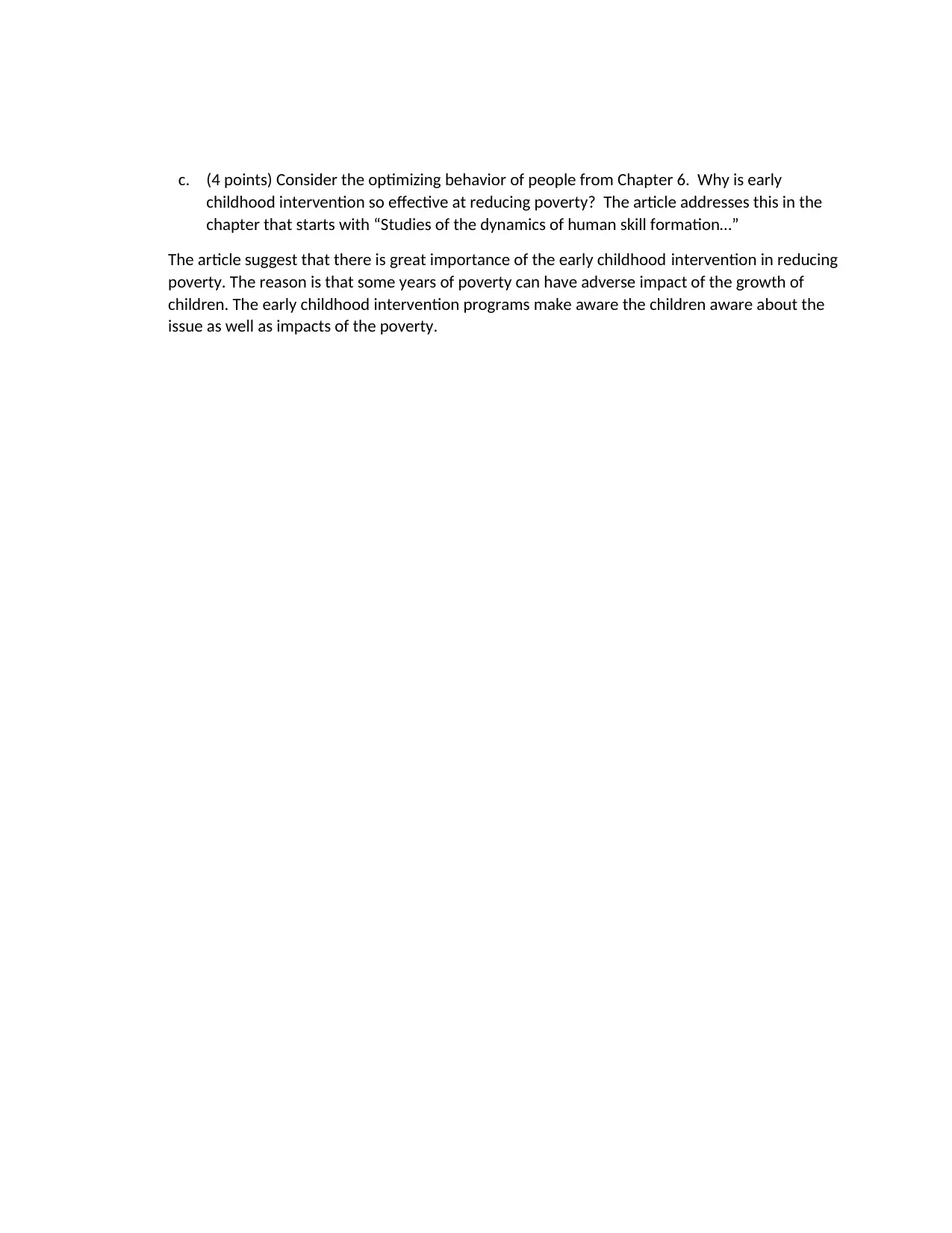Economics Homework: Market Analysis, Poverty, and Economic Growth
VerifiedAdded on 2022/08/12
|3
|503
|25
Homework Assignment
AI Summary
This economics homework assignment addresses several key concepts in microeconomics and macroeconomics. It begins by defining poverty in the US, exploring measures to determine poverty, and differentiating between absolute and relative measures. The assignment then analyzes Professor Heckman's article on early childhood interventions, drawing a production possibilities curve to illustrate the impact of these interventions, and explaining their effectiveness in reducing poverty. Furthermore, the assignment delves into GDP calculations, including nominal and real GDP, the GDP deflator, and growth rates. It also explores the money supply, the role of the Federal Reserve, and the impact of government spending. Finally, it examines different schools of economic thought, including fiscal policies and their impact on economic indicators like unemployment and inflation, and the role of government intervention in managing the economy. The assignment provides comprehensive answers to questions related to elasticity, market equilibrium, and the effects of various economic policies.
1 out of 3




![[object Object]](/_next/static/media/star-bottom.7253800d.svg)